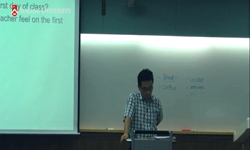This paper examines the mutual cooperation between callers and call-takers in emergency calls made in unique situations where the caller cannot speak directly due to the presence of the perpetrator. Through conversation analysis, this study explores h...
http://chineseinput.net/에서 pinyin(병음)방식으로 중국어를 변환할 수 있습니다.
변환된 중국어를 복사하여 사용하시면 됩니다.
- 中文 을 입력하시려면 zhongwen을 입력하시고 space를누르시면됩니다.
- 北京 을 입력하시려면 beijing을 입력하시고 space를 누르시면 됩니다.

피해자가 가해자와 함께 있는 상황의 상호작용 — 간접적 도움 요청과 신호 — = Interaction in Situations Involving Perpetrator: Indirect Requests and Signals
한글로보기부가정보
다국어 초록 (Multilingual Abstract)
The call-taker, while acknowledging the caller's disguise, gradually refined the questions to secure the necessary information, and continued the interaction with questions that could be answered with a simple yes/no, except for location-related inquiries. This paper demonstrates that rescue can be achieved through implicit signals, even in situations where the caller and call-taker cannot directly interact. This suggests the need for further research in Korea, where the interaction in emergency calls has not received much attention.
This paper examines the mutual cooperation between callers and call-takers in emergency calls made in unique situations where the caller cannot speak directly due to the presence of the perpetrator. Through conversation analysis, this study explores how indirect help requests are communicated and interpreted in such constrained interactions. The emergency call data from the National Police Agency, along with the agency’s best casebook and manual, were analyzed. The data showed that the caller deviated from the standardized emergency call structure from the first turn, disguising the call as a food delivery order or a conversation with a close acquaintance. The caller's turns were deviant, providing type-nonconforming answers or pausing repeatedly, but these actions functioned as signals to the call-taker, implicitly asking for help.
The call-taker, while acknowledging the caller's disguise, gradually refined the questions to secure the necessary information, and continued the interaction with questions that could be answered with a simple yes/no, except for location-related inquiries. This paper demonstrates that rescue can be achieved through implicit signals, even in situations where the caller and call-taker cannot directly interact. This suggests the need for further research in Korea, where the interaction in emergency calls has not received much attention.
동일학술지(권/호) 다른 논문
-
- 사단법인 한국언어학회
- 안영희
- 2025
- KCI등재
-
- 사단법인 한국언어학회
- 유석
- 2025
- KCI등재
-
담화표지 ‘어디’의 의미와 기능 — 한중 대조를 중심으로 —
- 사단법인 한국언어학회
- 왕온함
- 2025
- KCI등재
-
- 사단법인 한국언어학회
- 배윤정
- 2025
- KCI등재




 KCI
KCI DBpia
DBpia


